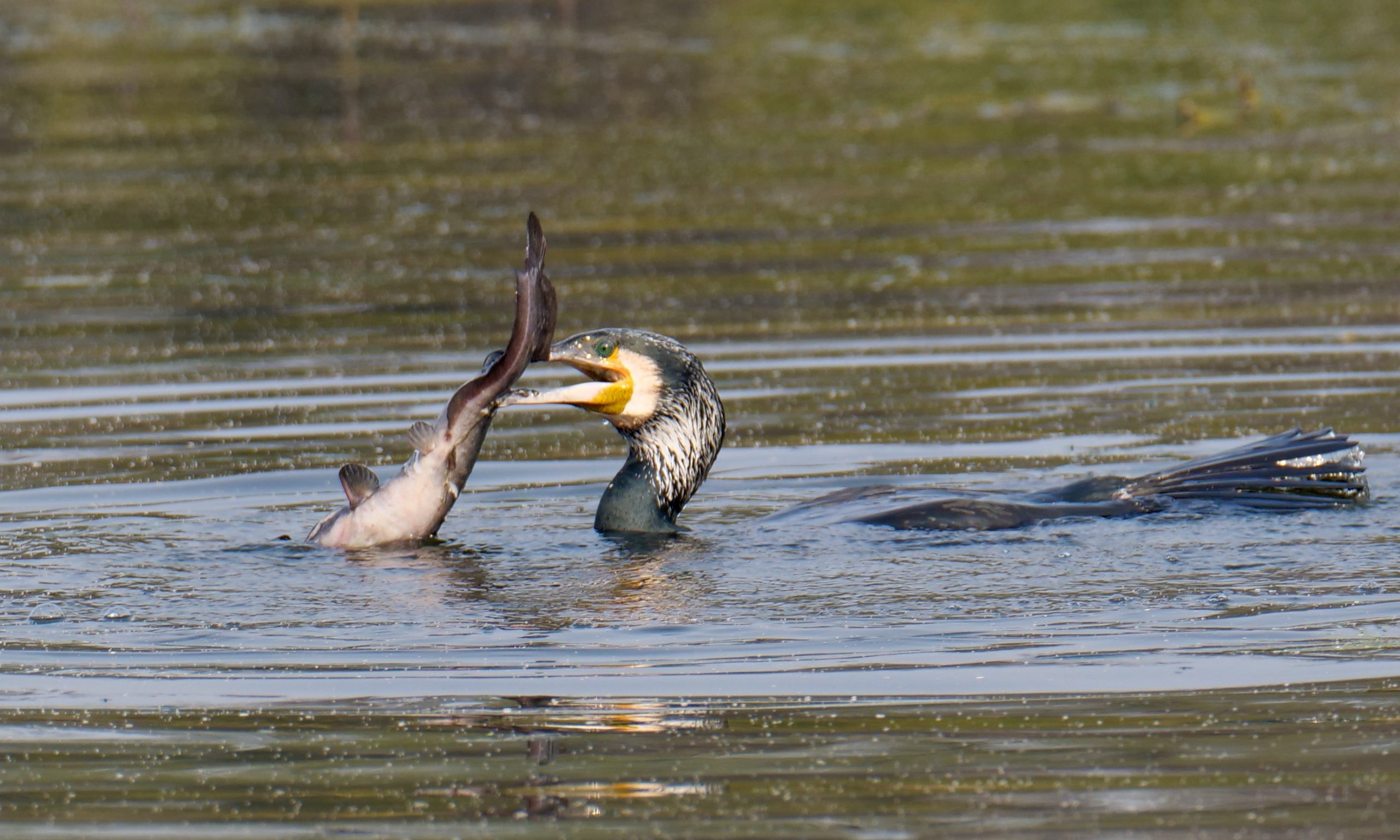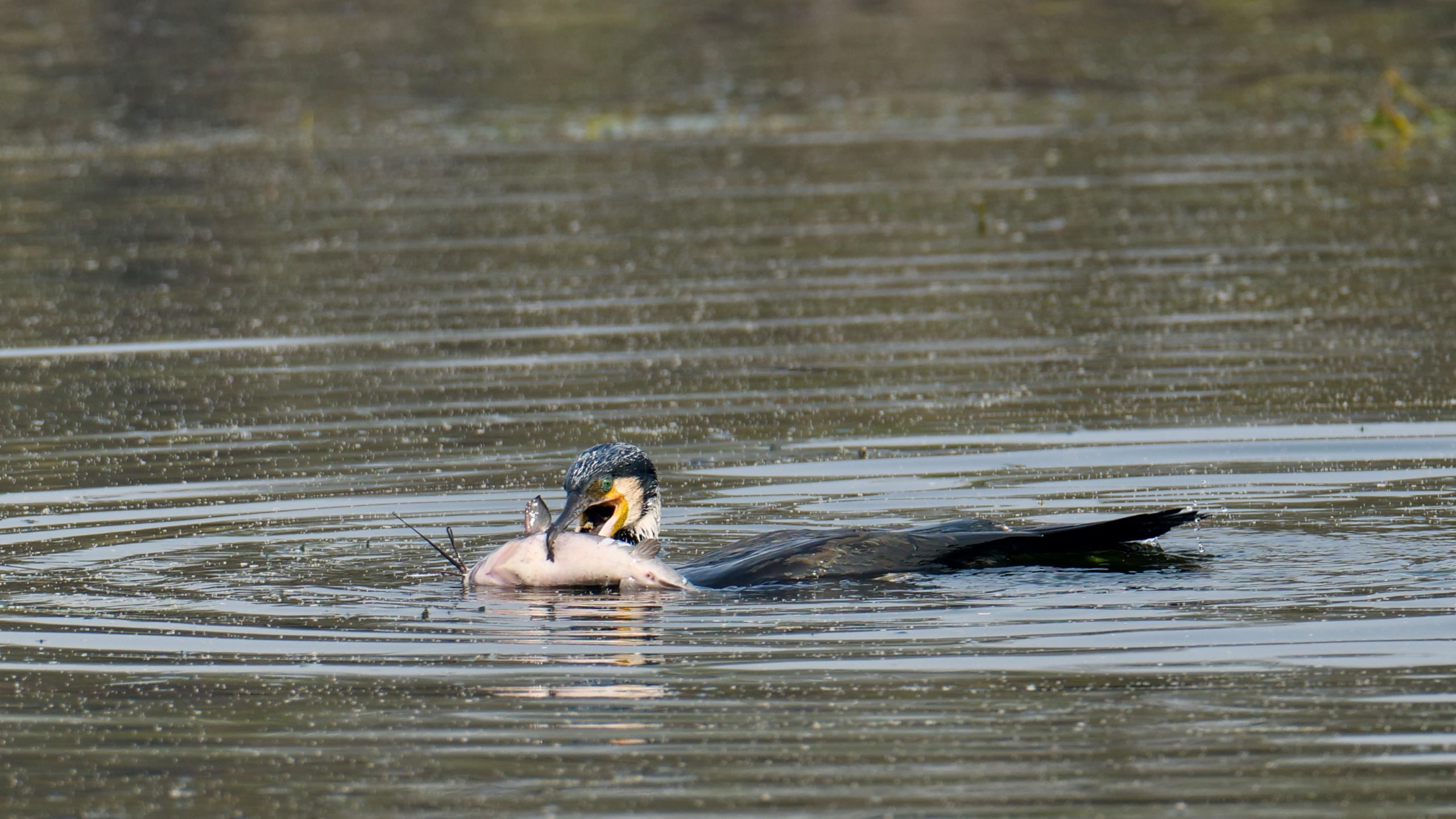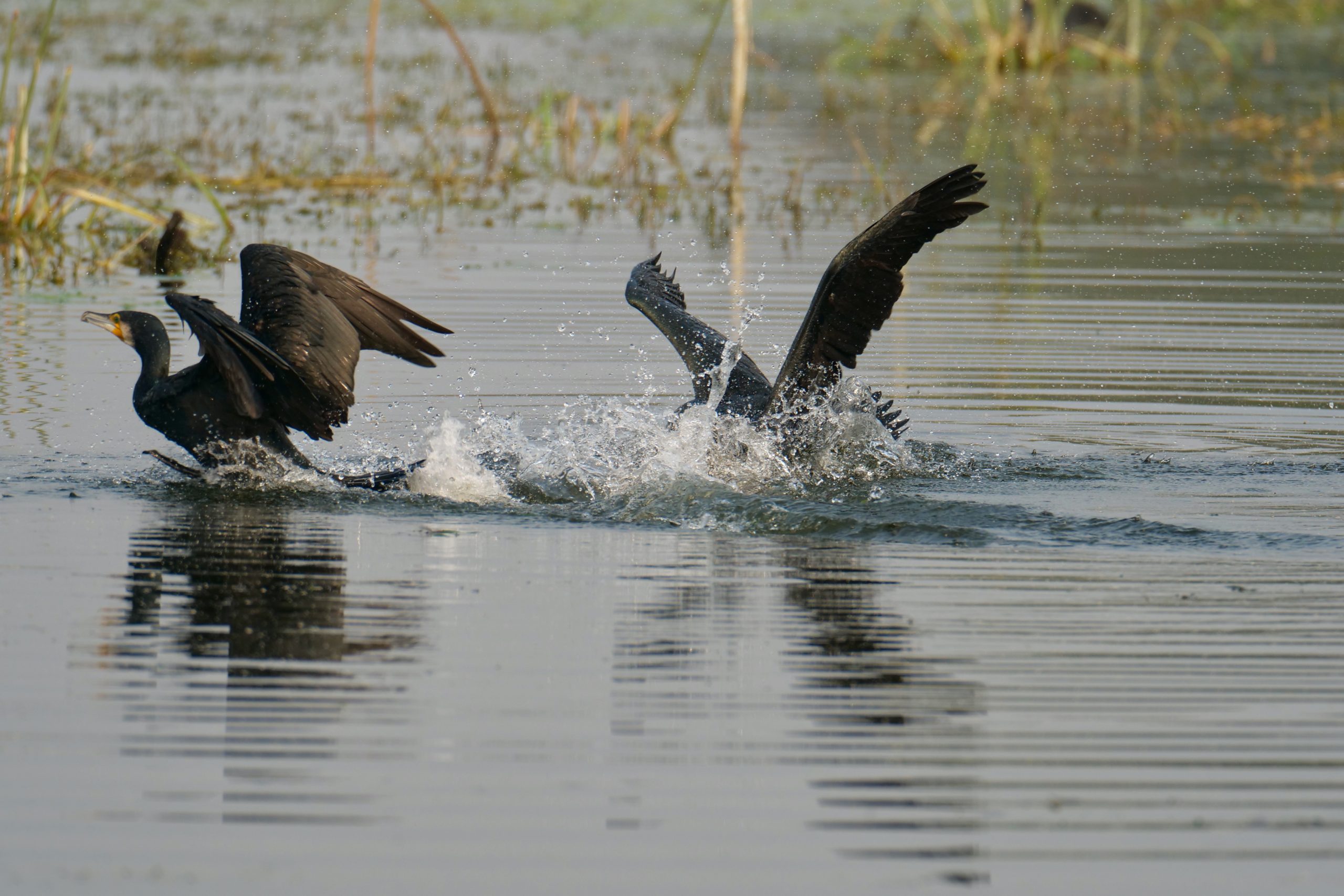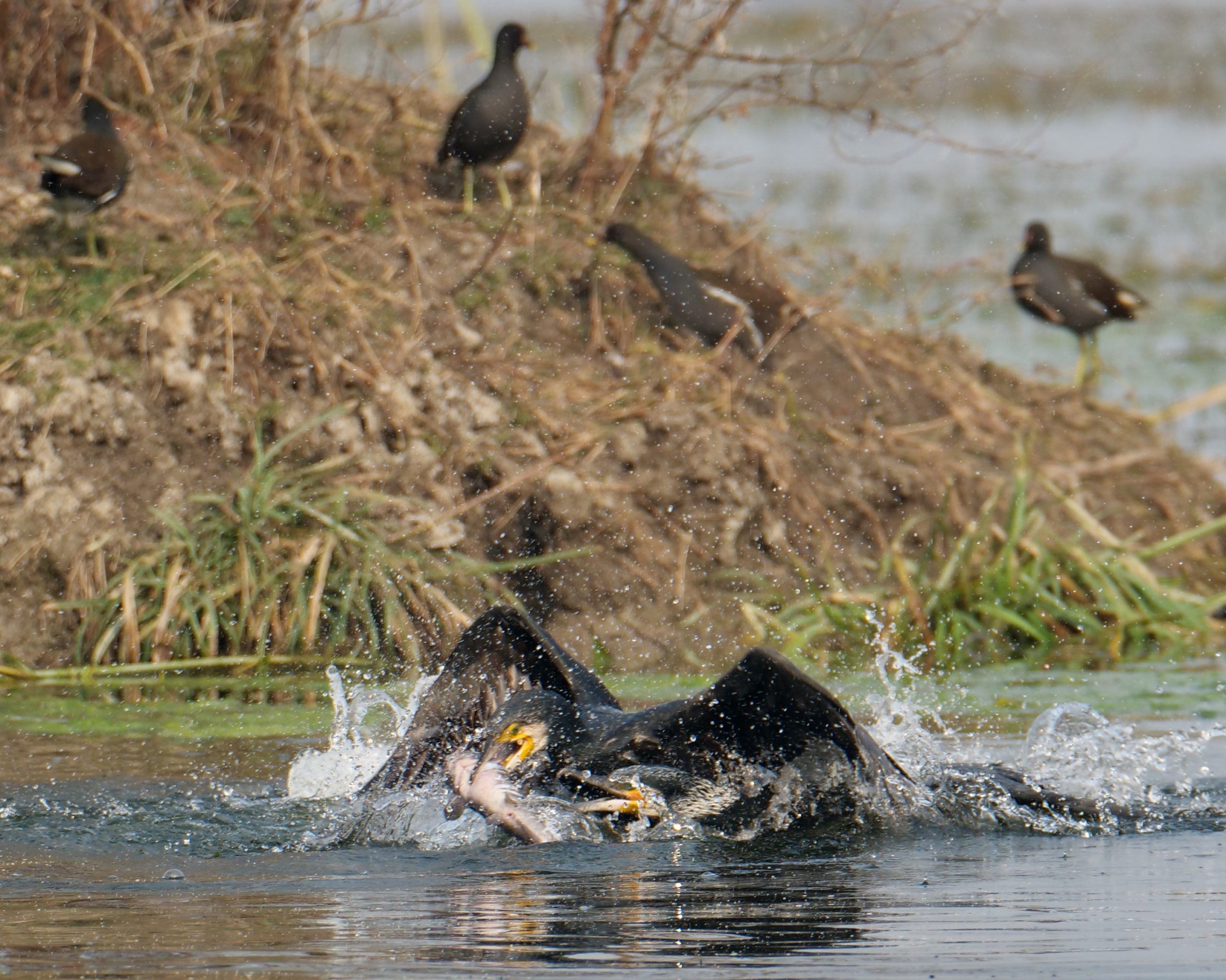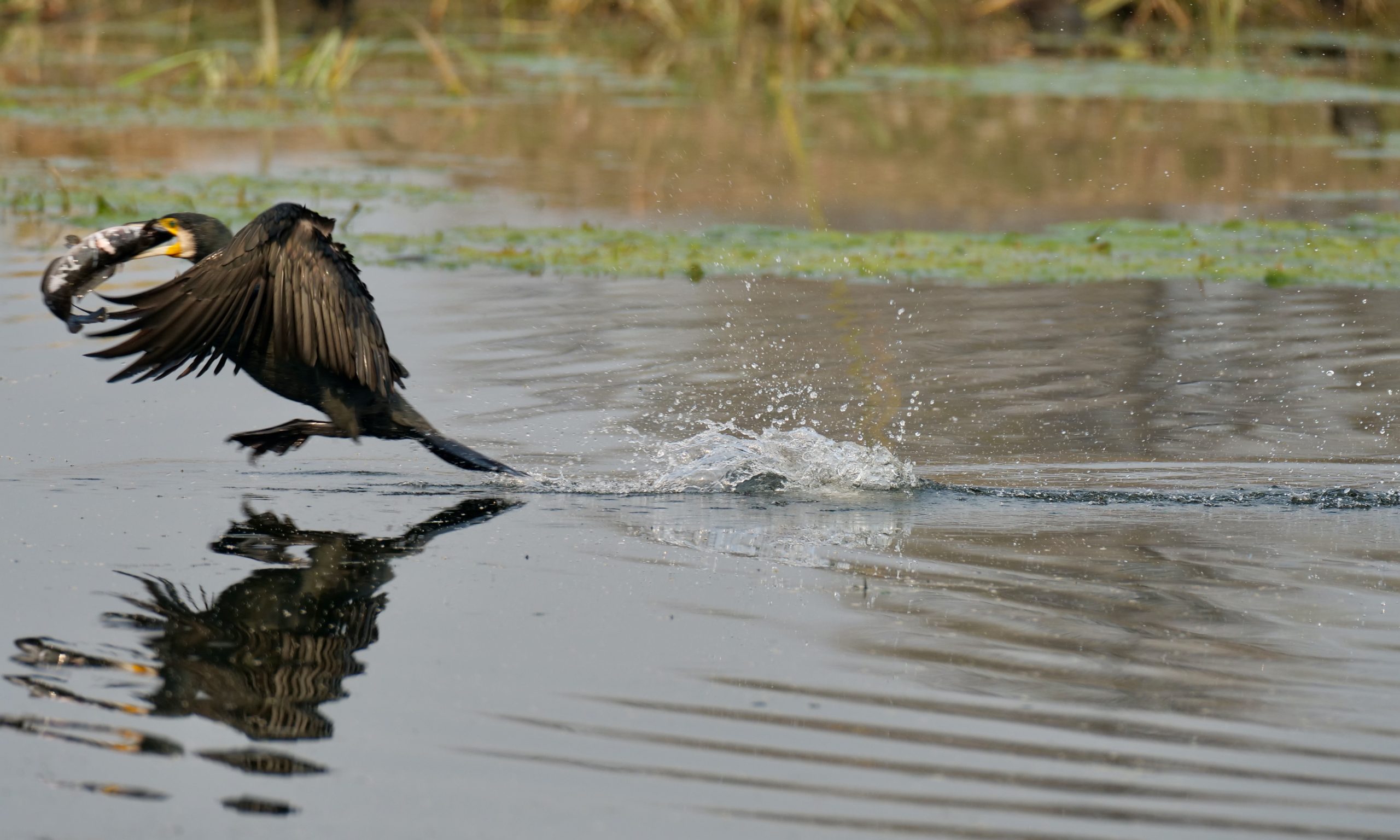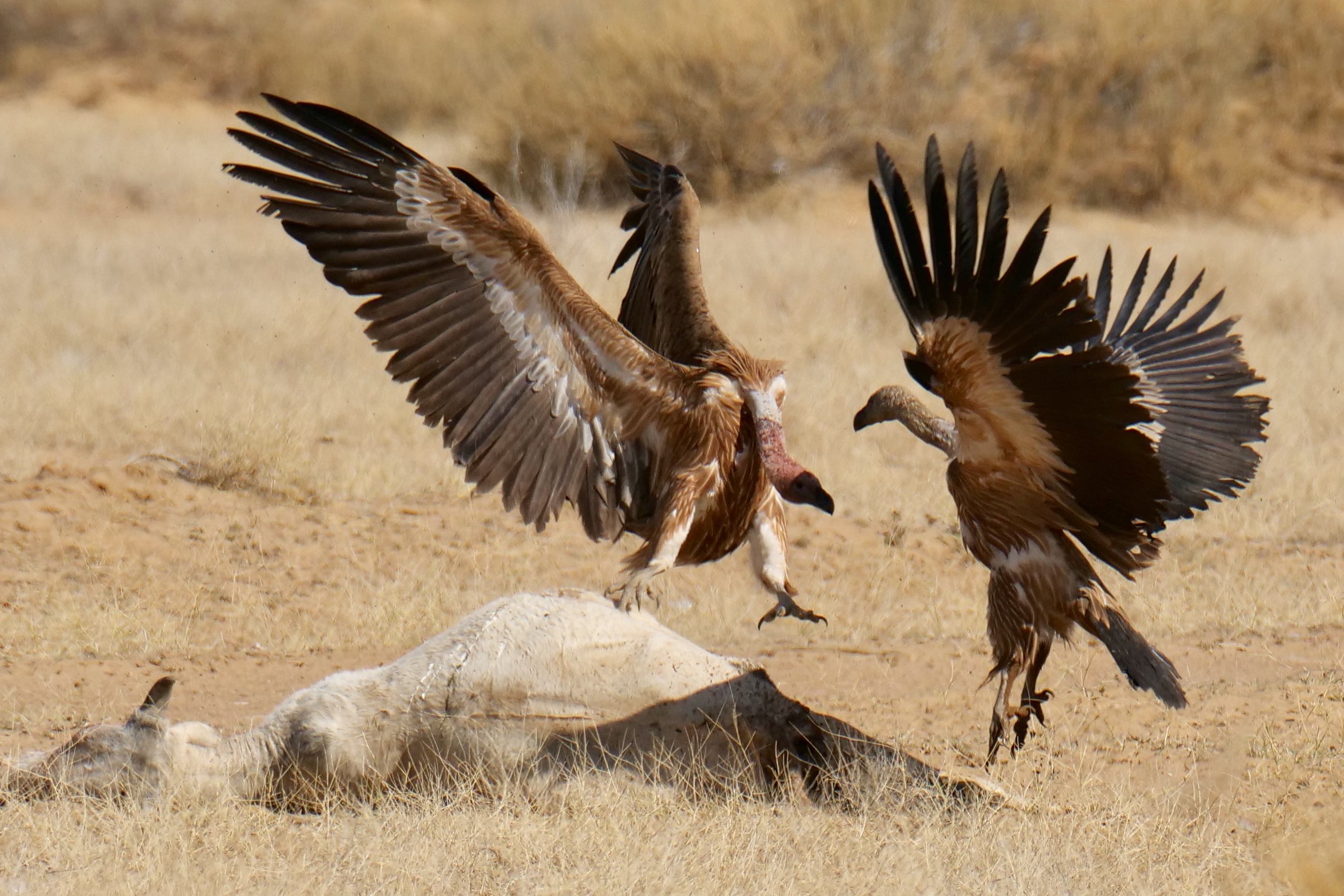The next image – taken within seconds of the featured one – shows which of the feuding Griffon Vultures won their brief stoush.
(All photos copyright Doug Spencer, taken February 2020)
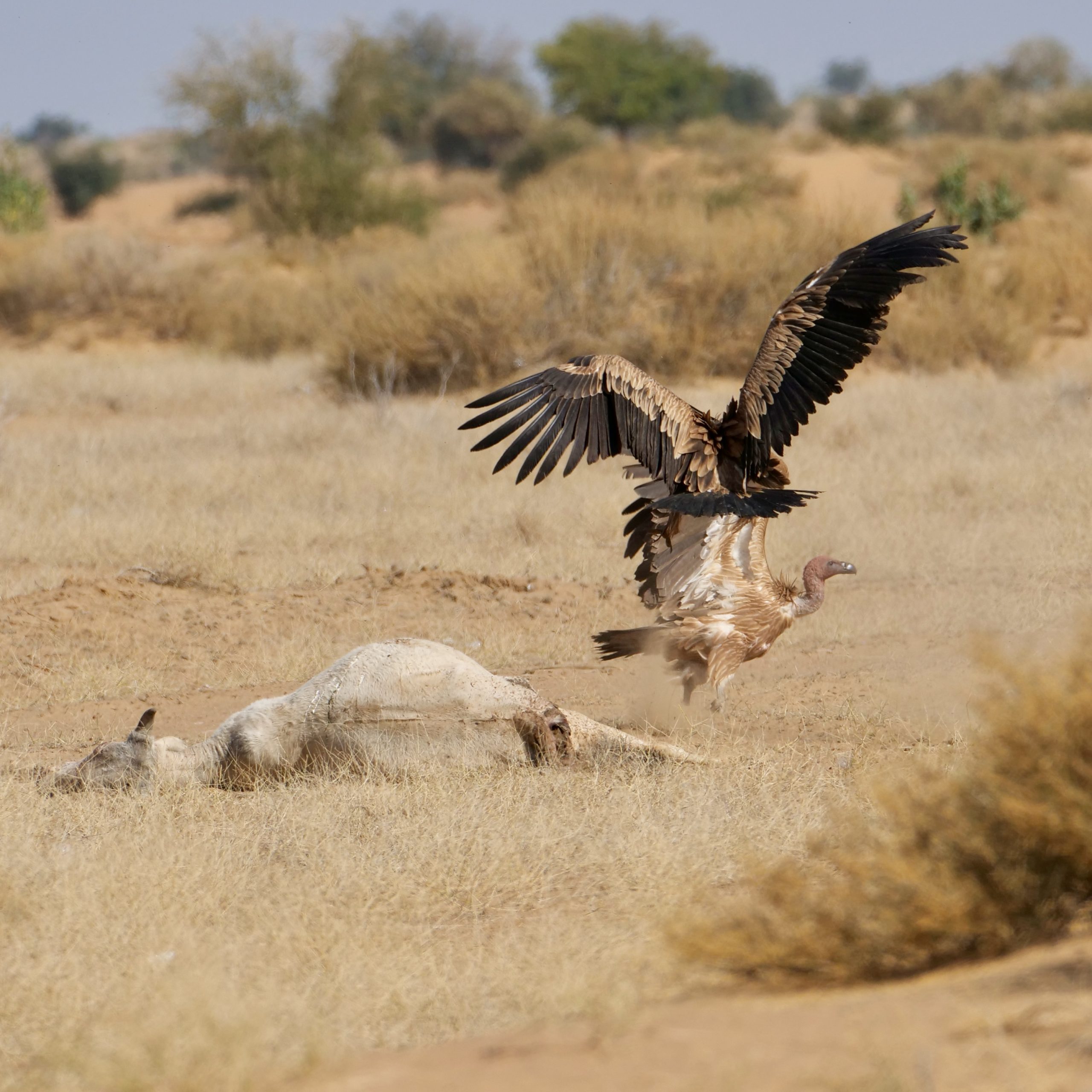
The consequence for the loser was unlikely to be severe; his or her lunch would follow the victor’s, but the carcass was more than big enough to feed them both…and more besides.
Carrion is an “efficient” food source; already dead, or dying, it may have to be fought for and searched for, but carrion-feeders do not have to expend energy and ingenuity in stalking, pursuing and subduing their prey.
For many predators, their success rate is low – often, the prey does escape.
Humans’ anthropomorphism notwithstanding, Vultures are not in fact “despicable opportunists”, nor are predators actually “noble”.
Predators often “steal” from their peers, or from other species.
If, for example, you were to watch a Painted Stork stalk, catch, and “deal with” a fish, you would notice that the process can expend a lot of time and effort…and may well end with the seemingly-caught fish getting away, after all.
So, this Painted Stork’s attempted theft of an Egret’s catch makes excellent sense – much better sense than it would for the opportunist to tackle a fellow Painted Stork.
Egrets are considerably less hefty than Painted Storks!
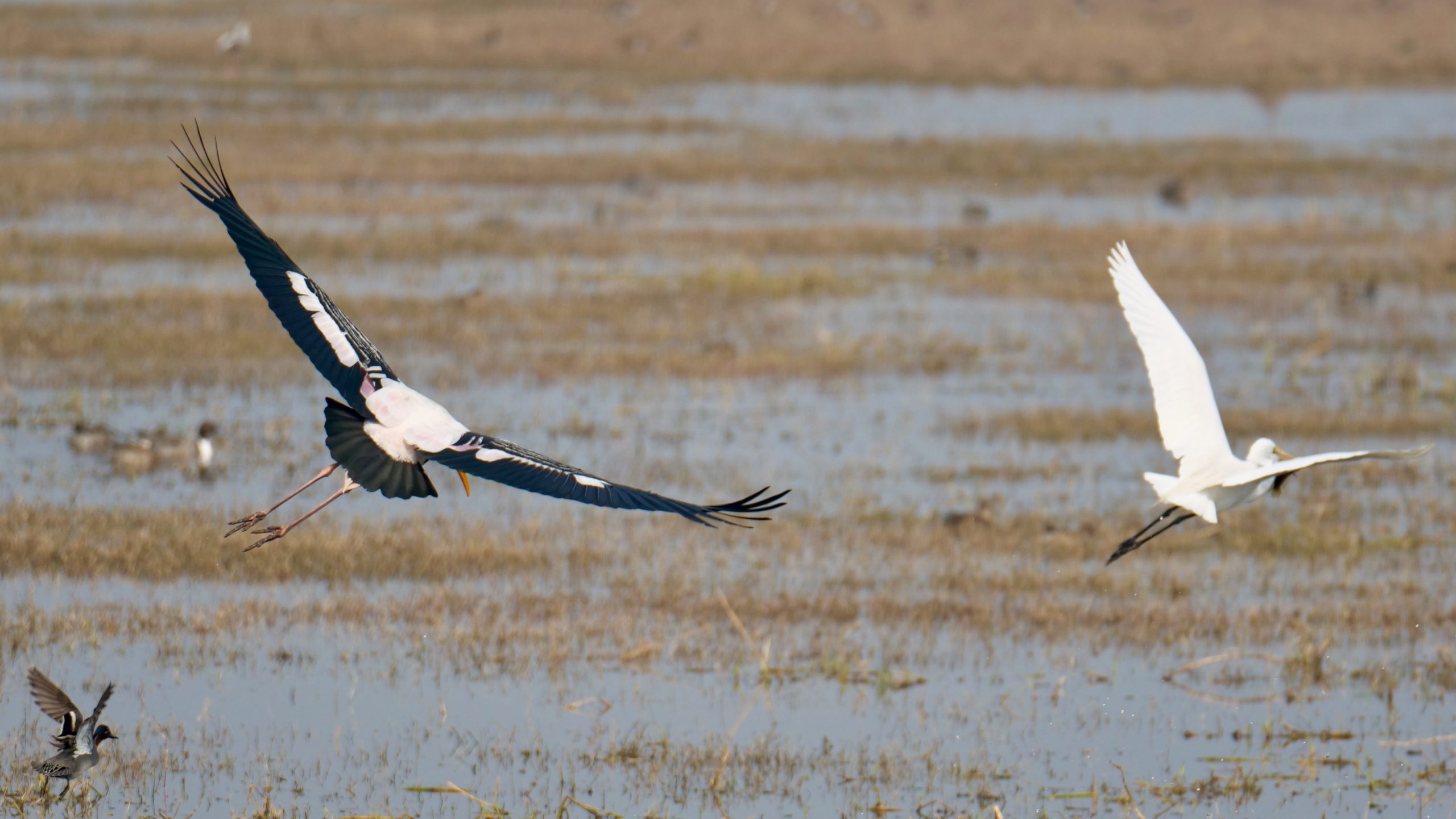
As it happens, on this occasion the stork’s attempted heist failed, but this failure was a very brief event.
On the same morning, 80 minutes earlier – also at Bharatpur Bird Sanctuary, which is the “star” part of Keoladeo National Park – we saw one cormorant seize another’s catch.
“Cormorant catches fish” had unfolded over some minutes, but “thieving cormorant snatches hunting cormorant’s catch” was a nigh-instantaneous affair.
Alas, my ability – or my camera’s ability – to attain/retain sharp focus was not sharp/quick enough, but these imperfect images still tell a vivid story.
